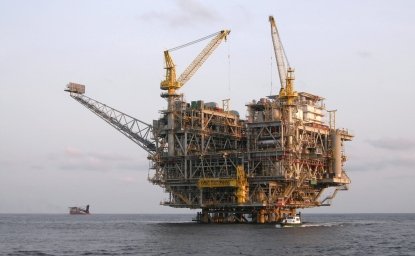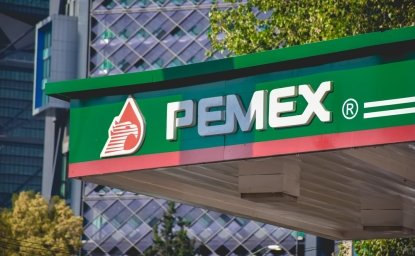The behavior of oil prices this week reinforces the point, but the market signals were already clear: the collapse of demand in the context of COVID-19 implies a retraction of the hydrocarbon sector for several years. The illusion that the successful expansion of Pemex would finance the social and infrastructure programs of President Andrés Manuel López Obrador has ended. This had already happened by not continuing with the implementation of the energy reform, by postponing, several times, the energy component of the infrastructure plan, and by putting all the eggs in the Pemex basket. The pandemic is the last straw.
The world is swimming in oil that cannot be used, and it will only take a matter of days for production to collapse as well. With little consumption of gasoline, diesel, and jet fuel, the maximum storage capacity will be reached very soon, which will saturate ships and railroads, making it impossible for refineries to empty their production and stop buying oil from wells that have neither pipelines nor ships for the flow that streams from the deposits.
Once the pandemic ends with effective treatment (it may not be too long) or a vaccine (still a long time to go), it will take time for the economy to recover, and even more time for the price of oil and its production. COVID-19 comes with a structural decrease in the demand for hydrocarbons (fewer trips, traffic, and displacements), and the production of wells will increase based on the priority of competitiveness: the most efficient will start and the marginal ones will go after. Those of Mexico will not be among the first ones to go unless they are willing to lose their exploitation. Those in the exploration phase will not generate barrels for a long time. In this context, Saudi Arabia will increase its market share in order to avoid the revival of its competitors.
This price outlook sends a powerful downsizing message for oil companies, including Pemex, to be competitive with lower upstream and downstream trading volumes to stop the bleeding. Without a significant conversion and reduction of costs and indebtedness, Pemex will not only not contribute to public finances, but will subtract resources from them.
The inevitable increase in the public deficit (not less than 5% of the GDP in 2020, even without any support, so that the lack of liquidity does not become insolvent for the taxpayers) for at least three years will need a fiscal strategy that cannot come only in cuts and/or cancellation of emblematic infrastructure projects.
Lower oil revenues, the inevitable drop in income and VAT, and the need to increase spending on health and support for families and businesses at the local level, will also increase the fiscal tension between state governors and the federal government. There will be significant budget constraints with few options to increase income since a tax-collecting reform would be counterproductive.
The options are on four fronts: one, property tax reform to change the relationship between federation and states; two, a significant increase in the IEPS for fuels; three, a reallocation of Banco de México assets in favor of federal government debt instruments in the medium term; and four, a maximum price of $15 per barrel, for budget preparation.
The most important reform is the first, the property reform, since it addresses the need for resources and long-standing structural problems. In a context of oil abundance and without the re-election of mayors, the municipal governments had no incentive to collect property tax; it was easier to hold out their hand and extort the federal government. That ended. Property tax is the best instrument to allocate resources to local governments. For this, reforms to article 115 of the Constitution, the Fiscal Coordination Law, state constitutions, the Law of the National System of Information, Statistics and Geography (INEGI), and others are required. It is essential that the collection is conducted by the state government and not the municipal ones. It is essential that the land registry is conducted and updated by the INEGI. It is essential that the property ticket specifies the distribution of the proceeds: 10% for the state government, 50% for the municipal government, and 40% for the town or neighborhood where the property is, in order to align the incentives for collection and protection of property rights. It is essential to establish a scheme that changes how the Federation's Expenditure Budget (PEF) transfers resources to states and municipalities, with the dual objective of rewarding property collection and achieving equitable redistribution. Thus, for each peso that is collected from property, the PEF would contribute, increasingly with the level of municipal marginalization, up to five times more, with an absolute cap to avoid favoring more privileged areas. Only with this land reform will it be possible to have viable municipal governments with the capacity for urban execution and security. Likewise, it will promote respect for property rights and the attraction of investment (including gas and oil pipelines that must also be taxed) since the authorities will see them as a taxable base. Additionally, it will increase accountability. When the money comes from a distant deposit, nobody cares much about how it is spent, but with property tax we do.
The second front is key from the budgetary and environmental perspective. These hydrocarbon prices represent the best time for a considerable increase in the IEPS on gasoline, diesel, and jet fuel, despite the sharp drop in demand. With a low price for the next few years, the IEPS collection will be higher than the oil rent. Mexico should be seen as a fuel consumer (which imposes a tax burden on an activity with strong externalities) and not as an oil renter; which it is not anymore. The transition to taxes based on carbon content is a structural change to restore the fiscal balance and move towards an economy based on renewable resources.
Once we reach the end of the COVID-19 tunnel, Banco de México could make an important contribution to the macroeconomic stability by considering an asset substitution in favor of long-term federal government dollar debt, through open market purchases and a significant decrease in its international reserves. The reserves are constituted to be used in the most critical moments as a result of a crisis. This is the most important crisis in a hundred years. This asset substitution would greatly reduce pressure from global capital markets, and the idea that reserves are there to defend exchange rate parity would be abandoned.
All this must be complemented with reforms to the Federal Budget and Fiscal Responsibility Law and the Law of the Mexican Petroleum Fund for Stabilization and Development, so that the price of oil incorporated into the PEF cannot be greater than 15 dollars per barrel and, so that, when it is higher, the surpluses are deposited in the FMP to be returned to the PEF, above a threshold, for investment and non-current expenses.
This article was originally published in Spanish in El Universal.
The opinions expressed in this article are solely those of the author.
Author
Managing Director, De La Calle, Madrazo & Mancera and former Undersecretary, Ministry of Economy, Mexico

Mexico Institute
The Mexico Institute seeks to improve understanding, communication, and cooperation between Mexico and the United States by promoting original research, encouraging public discussion, and proposing policy options for enhancing the bilateral relationship. A binational Advisory Board, chaired by Luis Téllez and Earl Anthony Wayne, oversees the work of the Mexico Institute. Read more

Explore More
Browse Insights & Analysis
La esencia de la infraestructura global: perspectivas del líder de la industria Matt Harris

Debunking the Patient Capital Myth: The Reality of China’s Resource-Backed Lending Practices


